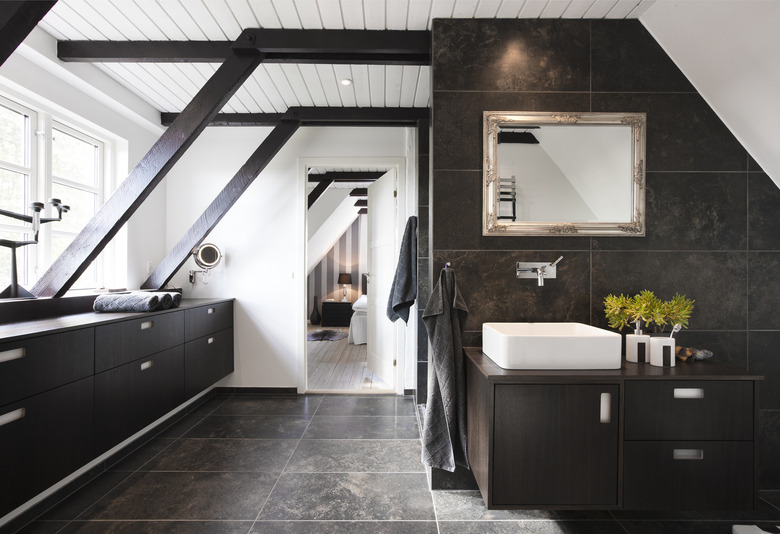Can A Porcelain Tile Floor Be Buffed?
Porcelain tile is one of the most popular flooring materials because of its high durability, its variety in terms of color and texture, and its ease of maintenance. While porcelain tile is beautiful in low traffic areas like the bathroom, it works very well in high traffic spaces like the living room, kitchen and patio. Cleaning porcelain tile is an easy task that requires the right tools. Washing, wiping and buffing will keep the tile shiny and new-looking for many years.
Tip
You can hand buff a porcelain tile floor in your home. If it's a large floor, you can also use a buffing machine, but this is a drastic measure usually reserved for large commercial or public spaces.
Cleaning Porcelain Tile Floors
Cleaning Porcelain Tile Floors
Unlike soapstone, marble, granite and other delicate stones, porcelain tile is highly durable and resistant to staining and warping, particularly with attentive care and upkeep. Although tile and grout can absorb moisture, they are also easy to clean.
To clean porcelain tile floors, you can use one of many pre-made specialized commercial cleaners that are available, or you can use a simple solution made out of 1/4 cup of vinegar and a gallon of fresh water. To begin to polish your porcelain tile floor, you can sweep it with a soft bristle broom to gather any hair, dust or debris that might be lingering in the tiles or on the corners. Next, mop the floor with the cleaning solution of your choice, being careful to mop thoroughly.
Next, rinse the floor gently with clear, fresh water. Be careful not to saturate the floors as grout can be porous, and water that gets trapped there can cause lasting damage. Finally, dry the towel with a soft microfiber cloth.
Buffing Tile Floors
Buffing Tile Floors
It is very easy to hand buff porcelain tile floors using either a soft cloth or porcelain tile polishing pads. No buffing solution is needed when using the pads, you can simply polish the tiles in a circular motion to restore them to their original shine. Unglazed porcelain tile won't shine in the same way that glazed porcelain tile does, but it will still look bright and have a noticeable sheen to it.
Some places see large amounts of foot traffic, and for those, a tile buffing machine to clean and polish porcelain tiles is often employed. Although this is useful for spaces like a museum, a courthouse, or another public space where there is a large amount of area to cover, buffing porcelain tiles in your home, especially glazed ones, is not recommended.
For one thing, the buffing machine is heavy enough to crack most glazed porcelain tiles that are installed in kitchens and bathrooms, and it is a good idea to avoid dragging machinery like that across the surface of the tile. Instead, utilize a buffing solution with a soft microfiber cloth or a dedicated buffing pad to buff the tile by hand.
Porcelain Tile Maintenance
Porcelain Tile Maintenance
Aside from regular sweeping and mopping of porcelain tile, porcelain tile polishing kits are available. Porcelain tile restoration is also something that you may want to look into if you have old or damaged porcelain tiles. Otherwise, there are several ways that are not expensive or costly to keep your porcelain tile looking like new.
Be vigilant about spills and stains. As soon as you notice that a spill has occurred, mop it up promptly. Dark-colored liquids like wine or coffee can stain the tile, particularly the grout in between. If you do notice lingering residue from the spill on the tile, be sure to apply a solution of vinegar, water and baking soda to the affected area. Rinse with water after use, and the stain will most likely have lifted.
If you are cleaning unglazed porcelain, steer clear of any commercial cleansing agents that have dye, colors or heavy fragrances. This can damage the tile and the grout lines. Do not use abrasive materials like steel wool or heavy harsh scrubbing brush bristles to clean the tile. These can leave scratches or other marks on the surface of the tile and can even crack and loosen the grout lines.
